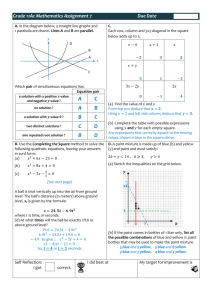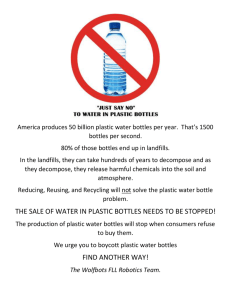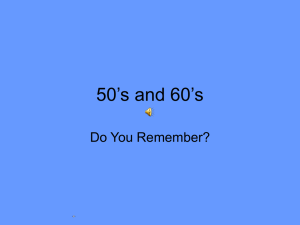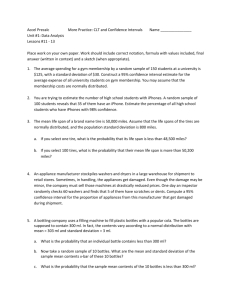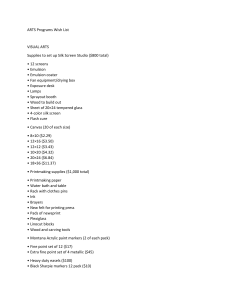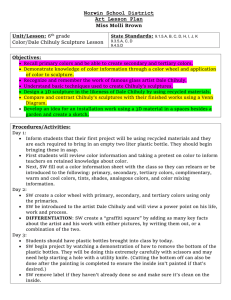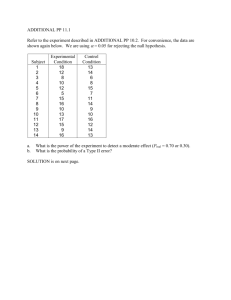File - EMILY FIEDLER
advertisement
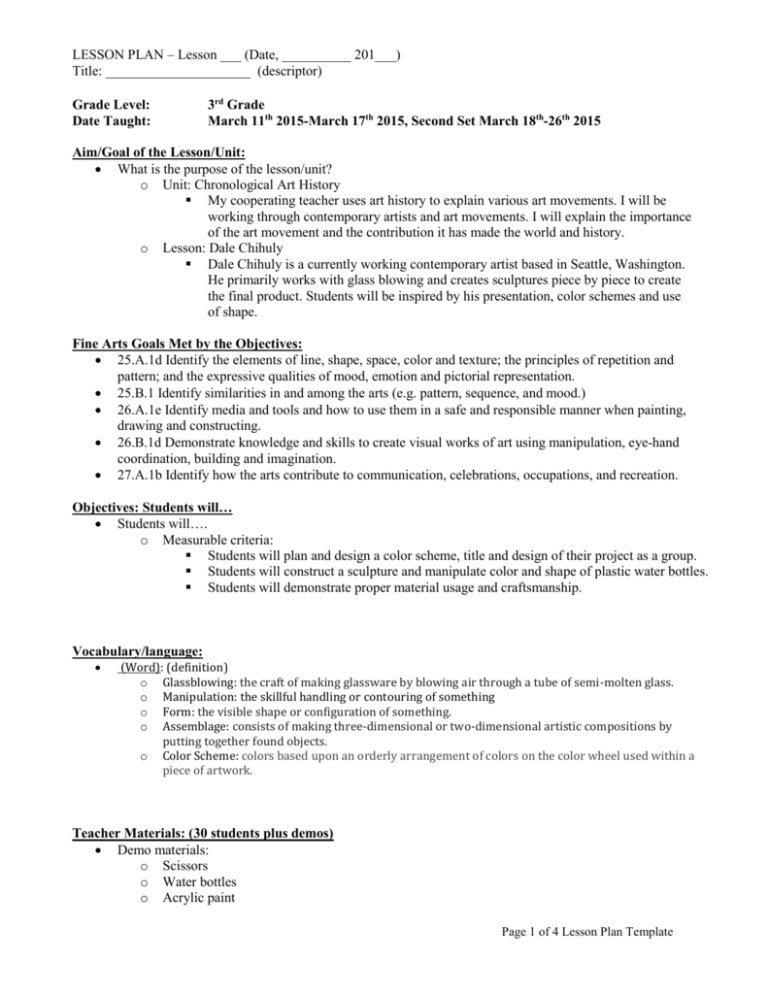
LESSON PLAN – Lesson ___ (Date, __________ 201___) Title: _____________________ (descriptor) Grade Level: Date Taught: 3rd Grade March 11th 2015-March 17th 2015, Second Set March 18th-26th 2015 Aim/Goal of the Lesson/Unit: What is the purpose of the lesson/unit? o Unit: Chronological Art History My cooperating teacher uses art history to explain various art movements. I will be working through contemporary artists and art movements. I will explain the importance of the art movement and the contribution it has made the world and history. o Lesson: Dale Chihuly Dale Chihuly is a currently working contemporary artist based in Seattle, Washington. He primarily works with glass blowing and creates sculptures piece by piece to create the final product. Students will be inspired by his presentation, color schemes and use of shape. Fine Arts Goals Met by the Objectives: 25.A.1d Identify the elements of line, shape, space, color and texture; the principles of repetition and pattern; and the expressive qualities of mood, emotion and pictorial representation. 25.B.1 Identify similarities in and among the arts (e.g. pattern, sequence, and mood.) 26.A.1e Identify media and tools and how to use them in a safe and responsible manner when painting, drawing and constructing. 26.B.1d Demonstrate knowledge and skills to create visual works of art using manipulation, eye-hand coordination, building and imagination. 27.A.1b Identify how the arts contribute to communication, celebrations, occupations, and recreation. Objectives: Students will… Students will…. o Measurable criteria: Students will plan and design a color scheme, title and design of their project as a group. Students will construct a sculpture and manipulate color and shape of plastic water bottles. Students will demonstrate proper material usage and craftsmanship. Vocabulary/language: (Word): (definition) o o o o o Glassblowing: the craft of making glassware by blowing air through a tube of semi-molten glass. Manipulation: the skillful handling or contouring of something Form: the visible shape or configuration of something. Assemblage: consists of making three-dimensional or two-dimensional artistic compositions by putting together found objects. Color Scheme: colors based upon an orderly arrangement of colors on the color wheel used within a piece of artwork. Teacher Materials: (30 students plus demos) Demo materials: o Scissors o Water bottles o Acrylic paint Page 1 of 4 Lesson Plan Template LESSON PLAN – Lesson ___ (Date, __________ 201___) Title: _____________________ (descriptor) o Gloss medium o Curling ribbon o Chicken wire o Hole puncher o Paintbrushes For Student: o Water bottles o Acrylic paint o Gloss medium o Curling ribbon o Paint brushes Teacher made exemplar o I will have an exemplar of Past student work picture A cut water bottle A painted water bottle. Presentation materials (power point, etc) o I will have a short documentary on Chihuly to present to the students o I will also have a power point to educate students on the different color schemes and forms. Learner Materials: Sketchbooks Pencils Motivation/Activities and Prompts: Discussion Board Interactive demos and teacher-made exemplars Art Images/Exemplars o (List details of each exemplar, and general objective/purpose for showing this image/artifact.) Procedures: DISCUSSION: (8 minutes) o Introduce myself to the students o Explain that I am still in school, this is my last big project before I become a real teacher and Ms, Dostal isn’t going anywhere. o Show students glass blowing pieces and ask how they think it is made o Show general glassblowing video o Introduce Chihuly/glassblowing o Show chandelier examples o Pair/share title based on the color scheme for our chandelier o Vote on it as a class final class Whichever wins will be the color scheme we create. DEMONSTRATION: (8 minutes) I will demonstrate how to add color to a water bottle. Students will use a paintbrush to paint color and gloss medium to their water bottles (Solid color) Next students will add dashes If time permits, students will use the end of the paintbrush in dots and paint it out. Students should cover the entire water bottle in color. DESIGN/WORK SESSION (26 minutes) Students will be painting one water bottle each. Page 2 of 4 Lesson Plan Template LESSON PLAN – Lesson ___ (Date, __________ 201___) Title: _____________________ (descriptor) Step one: add solid color to water bottles. Step two: Rotate to another table add accent colors in dashes CLEANUP (7 minutes) Students will place their cut water bottles on the table with the wax paper when completed. Students will washout paint brushes and throw out their orange table covering. CLOSURE: (2 minute) o (List dialogue and/or what you plan to do to wrap up the lesson.) o Next class we will put these all together and hang them! Day 2 DISCUSSION: (8 minutes) o https://www.youtube.com/watch?v=fNVo3Vp5VOQ o Watch this video ^ o Process of creating exhibition o Discussion on display/ exhibiting Why are we hanging this? How would the meaning change if we display this piece a different way? o Title the work DEMONSTRATIONS: (5 minutes) o These are the techniques we will be using on this projects Punch holes in the spout of the piece using a hole puncher Demonstration on curling ribbon Always pulling away from your body Loop through the punched hole Tie in a knot, twice onto the chicken wire We will be attaching the larger pieces first and then decrease in size o Show teacher made exemplars o Show Historical/Multicultural exemplars Relate to the video Show still frame of the giant green sculpture being assembled. DESIGN/WORK SESSION: (32 minutes) o I will be coming around to each student punching holes in each top o Curling ribbon to attach bottles and to add as accents o Line up bottles in size order and attach them in an assembly line procedure o Collectively go as a class to hang sculpture in school or class room CLEAN UP: (5 minutes) o Put away scissors o Throw away any extra ribbon o Line up Assessment: At this school, students are not graded with letter grades. Instead, there are checks, check pluses and pluses. I have a rubric from my cooperating teacher that grade on following: project directions, staying on task/effort, using materials and tools wisely/craftsmanship, and use of creativity/ problem solving skills. When grading, the final symbol they receive is determined by the amount of pluses they receive. Timetables: Time allotted for lesson (100 minutes total): Activity Minutes Page 3 of 4 Lesson Plan Template LESSON PLAN – Lesson ___ (Date, __________ 201___) Title: _____________________ (descriptor) Discussion Demonstrations Design/Work Session Clean-up Closure 16 mins. 13 mins. 58 mins. 12 mins. 2 mins. Page 4 of 4 Lesson Plan Template

